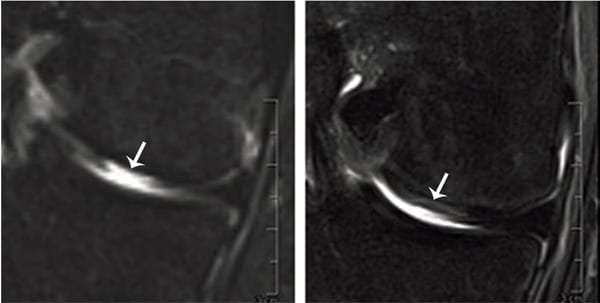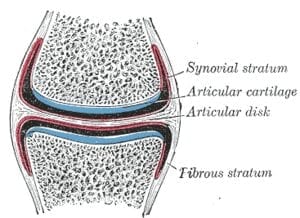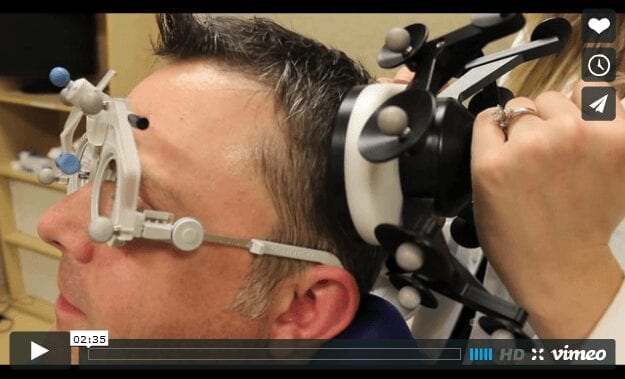
Human articular cartilage defects can be treated with nasal septum cells.
Researchers at the University and the University Hospital of Basel report that cells taken from the nasal septum are able to adapt to the environment of the knee joint and can thus repair articular cartilage defects. The nasal cartilage cells’ ability to self-renew and adapt to the joint environment is associated with the expression of so-called HOX genes. The scientific journal Science Translational Medicine has published the research results together with the report of the first treated patients.
Cartilage lesions in joints often appear in older people as a result of degenerative processes. However, they also regularly affect younger people after injuries and accidents. Such defects are difficult to repair and often require complicated surgery and long rehabilitation times. A new treatment option has now been presented by a research team lead by Prof. Ivan Martin, professor for tissue engineering, and Prof. Marcel Jakob, Head of Traumatology, from the Department of Biomedicine at the University and the University Hospital of Basel: Nasal cartilage cells can replace cartilage cells in joints.
Cartilage cells from the nasal septum (nasal chondrocytes) have a distinct capacity to generate a new cartilage tissue after their expansion in culture. In an ongoing clinical study, the researchers have so far taken small biopsies (6 millimeters in diameter) from the nasal septum from seven out of 25 patients below the age of 55 years and then isolated the cartilage cells. They cultured and multiplied the cells and then applied them to a scaffold in order to engineer a cartilage graft the size of 30 x 40 millimeters. A few weeks later they removed the damaged cartilage tissue of the patients’ knees and replaced it with the engineered and tailored tissue from the nose. In a previous clinical study conducted in cooperation with plastic surgeons and using the same method, the researchers from Basel recently already successfully reconstructed nasal wings affected by tumors.
The Latest on: Engineered cartilage
[google_news title=”” keyword=”Engineered cartilage” num_posts=”10″ blurb_length=”0″ show_thumb=”left”]
via Google News
The Latest on: Engineered cartilage
- Albany Engineered Composites Inc.on May 7, 2024 at 3:00 am
Three-day hands-on workshop from June 11-13 in Leuven, Belgium, will equip participants with a better understanding of fiber optic sensing technology for digital manufacturing of composite tanks.
- Rodrigo Somoza Palacios, PhDon May 4, 2024 at 5:22 am
Somoza, R.A. and Welter, J.F.: Isolation of Chondrocytes from Human Cartilage and Cultures in Monolayer and 3D. Methods Mol Biol. 2021;2245:1-12. doi: 10.1007/978-1 ...
- ISS National Lab-Sponsored Research Could Produce Nanomaterials for Life-Saving Therapies and Precision Drug Deliveryon April 25, 2024 at 11:34 am
Arthritis is a crippling disease, affecting approximately one in four adults. It wreaks havoc on our joints by breaking down cartilage, the cushioning between bones. Once that cartilage deteriorates, ...
- ISS National Lab-Sponsored Research Could Produce Nanomaterials for Life-Saving Therapies and Precision Drug Deliveryon April 24, 2024 at 5:00 pm
As part of a separate but related investigation that flew to the orbiting laboratory in January, Chen and his team sent engineered cartilage tissue to space to evaluate how effective JBNs were at ...
- Top 6 Best Shark Cartilage Supplements in 2024on April 24, 2024 at 5:00 pm
Recently, there has been an upsurge in the usage of shark cartilage supplements, primarily due to the possible advantages they provide for joint health, skin vitality, and the bolstering of the ...
- Hyalex Orthopaedics Reports Treatment of First Patients with Novel HYALEX® Knee Cartilage Systemon April 21, 2024 at 5:00 pm
HYALEX Cartilage is engineered to replicate the structure and function of hyaline cartilage, the strong and flexible tissue that enables the smooth and pain-free movement of your joints.
- Is the Tissue-Engineered Intestine Clinically Viable?on April 17, 2024 at 5:00 pm
These components of the small intestine would need to be generated as a part of the tissue-engineered intestine to produce peristalsis. The third obstacle is scaling up the size of the tissue ...
- UM research discovers new way to generate human cartilageon April 14, 2024 at 7:00 am
MISSOULA, Mont. — There’s a new way to generate human cartilage from the head and neck, according to researchers from the University of Montana and their partners. Stem cells can now be ...
- New way to generate human cartilageon April 9, 2024 at 5:00 pm
University of Montana researchers and their partners have found a new method to generate human cartilage of the head and neck. University of Montana researchers and their partners have found a new ...
- Research team discovers new way to generate human cartilageon April 9, 2024 at 5:00 pm
Grimes said there is a critical unmet need for new methods to regenerate human cartilage for the 230,000 children born annually in the U.S. with craniofacial defects.
via Bing News










